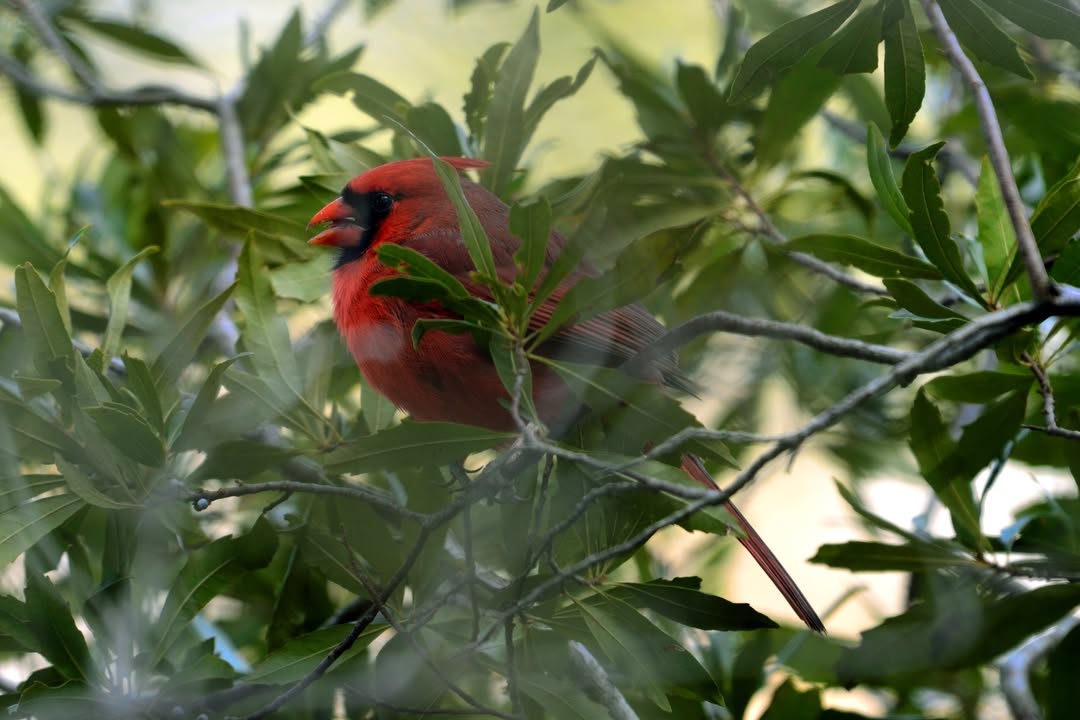- The cardinal as North Carolina’s state bird and its cultural significance.
- Cardinal’s dietary habits and its role in the ecosystem.
- States sharing the cardinal as their state bird and why.
- The biology and identification of cardinals.
- Conservation efforts and their status among North American birds.
The choice of the cardinal as North Carolina’s state bird in 1943 by the NC General Assembly highlights the importance and the endearment this species holds. Named the official state bird due to its vibrant presence and the cheer it brings throughout seasons, the cardinal stands bright against the backdrop of North Carolina’s lush greens. Its iconic red feathers and distinctive crest have made it a favored symbol in the state, representing vitality and beauty. Understanding its prominence extends beyond aesthetics; it reflects cultural symbols rooted deeply in local sentiments and traditions.
Cardinals are not just eye-catching because of their bright red plumage in males or the subtle, yet beautiful brown tones of females; they play a significant ecological role. Primarily seedeaters, they enjoy a diet that includes insects, larvae, and a range of fruits. The cardinal’s feeding habits contribute to pest control, making them an essential part of the balance in local ecosystems. By preying on larvae and insects, they help maintain the health of their habitats. Their seed-eating habits also support plant propagation, aiding in the dispersal of seeds across their range, which is widely beneficial for many plant species.
The cardinal is a state bird for seven states: Illinois, Indiana, Kentucky, Ohio, Virginia, and West Virginia, along with North Carolina. This shared selection underscores the bird’s broad appeal across different regions. The cardinal’s ability to thrive in varied environments from gardens to woodlands helps explain its popularity as a state bird. The bird’s adaptability symbolizes resilience and continuity, values held in high regard by these states. Additionally, its presence throughout the eastern United States ties these regions together with a common natural heritage.
Biologically speaking, cardinals are a species within the passerine family, known scientifically as Cardinalis cardinalis. One can identify males by their striking red color and black facial masks; females sport more subtle hues of brown with faint reddish tinges. Measuring about 8 to 9 inches in length, the cardinal’s song is a cheerful, whistling tune often heard year-round, a soundscape of its territories. The cardinal boasts robust adaptations that allow it to flourish in diverse habitats, ranging from dense forests to urban backyards.
Conservation efforts regarding cardinals highlight their status as a common species, although vigilance remains necessary to counter threats from habitat loss and climate change. Maintaining a habitat that supports their needs is essential for sustaining robust populations. Encouraging native vegetation that provides food and shelter benefits cardinals and other beneficial species. These birds are aggressive defenders of their territories, an attribute that helps them fend off predators, yet also necessitates space that allows for natural competition and balance. Wright conservation measures ensure the cardinal remains a thriving part of North America’s avian diversity.
The cardinal remains an enchanting presence across America’s landscapes. Its selection as North Carolina’s state bird showcases an enduring emblem of the region’s rich biodiversity and cultural fabric. Whether admired for their slightly out-of-the-ordinary appearances or their ecological contributions, cardinals remind us of the profound connection between people and nature.
*****
Source Description
We love that the North Carolina state bird is the cardinal! The NC General Assembly named the cardinal the official State Bird of North Carolina in 1943. Cardinals are seedeaters that also eat insects, larvae, sap, and many types of fruit. The states of Illinois, Indiana, Kentucky, Ohio, Virginia, and West Virginia have also chosen the Cardinal as their state bird!
Have you seen one of these bright red birds recently?


